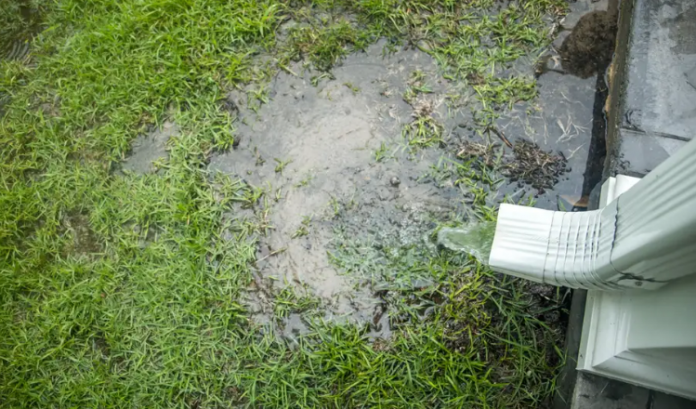Keep your foundation dry and your garden beautiful with these simple gutter alternatives.
Gutters do an important job—they protect the foundation and structure of your home from water falling off the roof. But anyone who has ever owned a home also knows that traditional gutters have their drawbacks: They can become clogged with leaves, and in colder weather, they can cause ice dams. They can also crack and sag, allowing water to damage the structure of your home. If you’re looking for an alternative, there are some good ones out there.
Rain chains
Rain chains are a practical alternative to gutters, and have been popular in Japan for centuries. This method draws water from the roof down a chain, sometimes with a series of bells or cups. The added resistance slows the water on its way to the ground, preventing splashing and erosion—and also makes a waterfall-like sound. Rain chains can also be placed strategically to collect water in a rain barrel, container, or even a garden bed, making them a great, sustainable alternative to gutters that can even shave a little bit off your water bill.
They’re heavy, though, and if you have a larger roof, you’ll need a lot of them to successfully control all of the water.
Grading
A cheap and practical solution for areas with a lower rate of rainfall is grading. This process involves shaping the ground around your home to allow water to run away from the foundation. You can use stones or soil to achieve the proper slope, but it should be at a 1-inch over 1-foot angle to make sure the water flows freely away. This is a project you can do yourself in a relatively short amount of time; however, grading isn’t feasible if you live on a hillside or too close to the water table, as it won’t be enough to keep your foundation dry.
French drains
Another alternative to regular gutters is a French drain system. Instead of a gutter at the edge of the roof, a French drain does essentially the same thing on the ground. It consists of a trench that slopes away from the house at a rate of at least 1 inch to every 8 feet, a perforated pipe, and some gravel to cover it. This method will keep the foundation dry only if properly installed, so you’ll probably need to hire a professional to ensure the drainage is adequate. Installation might be pricey, but once it’s in place, a French drain requires very little maintenance.
Rain dispersal system
A rain dispersal system is a way to break up rainwater into small streams or even drops. Instead of catching water, it spreads it away from the house. Sometimes referred to as a gutterless gutter system, it works well if the path for the water is planned out, but it can sometimes cause puddles and moisture buildup against your foundation if it isn’t. Some roof types aren’t the right shape for rain dispersal, but if you have a sloped roof and enough grading, it will draw water away from the house and eliminate soil erosion from cascading water.










